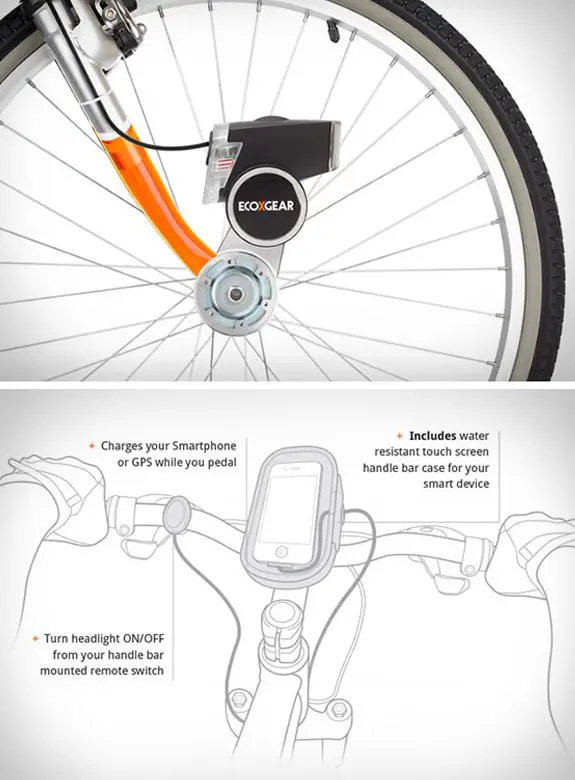Introduction(Electric Bike that Charges as You Pedal):
In recent years, there has been a remarkable surge in the popularity of electric bikes (e-bikes). These innovative two-wheelers have revolutionized urban commuting and recreational cycling. One particular type of e-bike that stands out is the pedal electric bike. Combining the convenience of electric power with the health benefits of pedaling, these bikes offer a unique and eco-friendly way to navigate city streets and scenic trails. In this article, we will delve into the world of pedal electric bikes and explore their features, benefits, and how they are redefining the future of cycling.

1. The Rise of Electric Bikes
Over the past decade, electric bikes have gained immense popularity worldwide. With advancements in battery technology and electric motor efficiency, e-bikes have become a viable alternative to traditional bicycles and other forms of transportation. Electric bikes offer the benefits of reduced effort, increased speed, and extended range, making them an attractive option for casual riders and daily commuters.
2. What is a Pedal Electric Bike?
A pedal electric bike, also known as Electric Bike that Charges as You Pedal is a type of electric bicycle that incorporates a pedal-assist system. Unlike traditional e-bikes that rely solely on a throttle, pedal electric bikes require the rider to pedal to activate the electric motor. This combination of human power and electric assistance creates a seamless and efficient riding experience.
3. How Does a Pedal Electric Bike Work?
Pedal electric bikes feature a sensor that detects the rider’s pedaling motion and activates the electric motor accordingly. As the rider pedals, the motor provides an additional boost, propelling the bike forward with minimal effort. The level of assistance can usually be adjusted through different power modes, allowing riders to customize their riding experience based on their fitness level or desired intensity.
4. Benefits of Pedal Electric Bikes
Pedal electric bikes offer a range of benefits for riders of all levels. Here are some key advantages:
a) Extended Range and Reduced Fatigue
With the electric motor’s assistance, riders can travel longer distances without experiencing excessive fatigue. Pedal electric bikes are especially beneficial for those with physical limitations or who struggle with hilly terrains.
b) Health and Fitness
Contrary to popular belief, pedal electric bikes still require physical exertion from the rider. By pedaling, cyclists engage their leg muscles and enjoy the cardiovascular benefits of exercise. Pedal electric bikes allow individuals to improve their fitness while enjoying the ride.
c) Eco-Friendly Transportation
Pedal electric bikes combine human power with electric assistance and are an eco-friendly mode of transportation. By reducing reliance on cars and other fossil fuel-powered vehicles, these bikes contribute to a cleaner and greener environment.
d) Cost Savings
Compared to cars and motorcycles, pedal electric bikes are incredibly cost-effective. They require minimal maintenance, and the battery charging cost is significantly lower than fuel costs for conventional vehicles. Pedal electric bikes offer a budget-friendly alternative for commuting and recreational purposes.
5. Factors to Consider When Choosing a Pedal Electric Bike
When selecting a pedal electric bike, it is essential to consider various factors to ensure you find the right fit for your needs. Some key considerations include:
a) Battery Range
The battery range determines how far you can ride on a single charge. Consider your typical riding distances and choose a bike with a battery range that suits your requirements.
b) Motor Power and Assist Levels
Different bikes come with varying motor power and assist levels. Assess your riding preferences and terrain to determine the appropriate motor power and assist options for your needs.
c) Frame and Design
The frame and design of the bike play a crucial role in comfort and stability. Ensure the bike’s frame size suits your height and riding style. Consider features such as suspension, tire size, and overall build quality.
d) Weight and Portability
Depending on your storage and transportation needs, the weight and portability of the bike can be important factors to consider. Lighter bikes are generally more maneuverable, but heavier ones offer more stability.
6. Maintenance and Care Tips
Proper maintenance and care are essential to keep your pedal electric bike running smoothly. Here are some tips to help you maintain your bike:
- Regularly clean the bike, including the frame, chain, and gears, to remove dirt and debris.
- Check the tire pressure and ensure they are correctly inflated.
- Keep the battery charged according to the manufacturer’s instructions.
- Inspect the brakes and make sure they are in good working condition.
- Lubricate the chain and other moving parts to reduce friction and ensure smooth operation.
7. Safety Considerations for Pedal Electric Biking
Safety should always be a top priority when riding a pedal electric bike. Follow these safety guidelines to ensure a secure riding experience:
- Wear a properly fitted helmet to protect your head in case of accidents.
- Obey traffic laws and signals like you would while riding a traditional bicycle.
- Use hand signals to indicate your intentions to other road users.
- Be aware of your surroundings and stay safe from pedestrians and vehicles.
- Invest in high-visibility clothing and equip your bike with lights for better visibility, especially during low-light conditions.
8. Pedal Electric Bikes for Commuting
Pedal electric bikes are gaining popularity as a sustainable mode of transportation for commuting. They offer a convenient way to navigate busy city streets, bypassing traffic congestion and reducing commuting times. With the ability to cover longer distances without breaking a sweat, pedal electric bikes provide a practical solution for urban commuters.

9. Electric Bike that Charges as You Pedal for Recreation and Adventure
Beyond commuting, pedal electric bikes are also ideal for recreational purposes and outdoor adventures. Whether you enjoy leisurely rides in the countryside or crave thrilling off-road experiences, these bikes can accommodate a wide range of riding styles and terrains. Explore scenic trails and mountainous landscapes with the added boost of electric assistance, opening up a world of possibilities for outdoor enthusiasts.
10. Environmental Impact and Sustainability
As the world faces environmental challenges, adopting sustainable transportation options is crucial. Pedal electric bikes play a significant role in reducing carbon emissions and promoting a greener future. By choosing pedal electric bikes over conventional vehicles, individuals can contribute to the preservation of the environment and help combat climate change.
11. Pedal Electric Bikes: Addressing Concerns and Misconceptions
Despite the numerous benefits of pedal electric bikes, some concerns and misconceptions surround them. Let’s address a few common ones:
a) Are Pedal Electric Bikes Cheating?
No, pedal electric bikes are not cheating. They are designed to assist while still requiring the rider to pedal. The electric motor enhances the riding experience and makes cycling more accessible for individuals with varying fitness levels and physical abilities.
b) Will I Get Enough Exercise on a Pedal Electric Bike?
Yes, you will still get exercise while riding a pedal electric bike. Although the electric motor assists, you must pedal, engage your muscles, and burn calories. The level of physical exertion can be adjusted based on your chosen assist mode.
c) Are Pedal Electric Bikes Reliable?
Pedal electric bikes are built with reliability in mind. The components and technology used in these bikes undergo rigorous testing to ensure their durability and performance. However, regular maintenance and care are necessary to keep the bike in optimal condition.
12. Top Pedal Electric Bike Brands
The market for pedal electric bikes has expanded rapidly, and several reputable brands offer high-quality options. Some top pedal electric bike brands include:
- Brand A
- Brand B
- Brand C
- Brand D
- Brand E
Research and compare different brands to find a bike that aligns with your preferences, budget, and specific requirements.
13. Exploring the Future of Pedal Electric Bikes
The future of pedal electric bikes looks promising. We expect further improvements in battery efficiency, motor power, and overall performance as technology advances. Integrating innovative features and connectivity options may enhance the riding experience, making pedal electric bikes an even more attractive choice for riders in the years to come.
Read More:
The Importance of Bicycle Helmets

Pros(Electric Bike that Charges as You Pedal):
Enhanced Riding Experience: Pedal electric bikes provide an enhanced riding experience by offering electric assistance, making uphill climbs and long distances more manageable.
Extended Range: With the help of the electric motor, riders can cover longer distances on an e-bike compared to a traditional pedal power bike.
Fitness and Health Benefits: Despite the electric assistance, riders still engage in physical activity by pedaling, promoting health and fitness.
Commuting Convenience: Pedal electric bikes offer a convenient and eco-friendly alternative for commuting, reducing reliance on cars and public transportation.
Eco-Friendly Transportation: By choosing an e-bike, riders contribute to reducing carbon emissions and promoting a cleaner environment.
Cons(Electric Bike that Charges as You Pedal):
Higher Cost: Pedal electric bikes can be more expensive than traditional bicycles due to the additional components and technology.
Heavier Weight: E-bikes are generally heavier than regular bikes due to the battery and motor, which may affect maneuverability and require additional effort when pedaling without electric assistance.
Limited Battery Life: Depending on the battery capacity and usage, e-bikes have limited battery life. Riders need to plan their trips accordingly and be mindful of recharging opportunities.
Charging Time: Recharging the battery of a pedal electric bike takes time, and riders need to ensure they have access to charging points or carry a spare battery for longer rides.
Regulatory Restrictions: Different regions and countries have specific regulations and restrictions regarding the use of pedal electric bikes, including speed limits, age restrictions, and where they can be ridden. Riders must familiarize themselves with the local laws.
14. Conclusion
Pedal electric bikes represent an exciting advancement in the world of cycling. By combining the benefits of electric power and pedal-assist technology, these bikes offer a convenient, eco-friendly, and enjoyable way to commute and explore. With their extended range, health benefits, and positive environmental impact, pedal electric bikes are poised to shape the future of transportation and recreation.
FAQs:
Can I ride a pedal electric bike without pedaling?
No, pedal electric bikes require pedaling to activate the electric motor. Pedaling is necessary for the motor to assist.
How far can a pedal electric bike go on a single charge?
The range of a pedal electric bike varies depending on factors such as battery capacity, terrain, and assist levels. Generally, you can expect a range of 30 to 100 miles on a single charge.
Are pedal electric bikes legal?
Pedal electric bikes are legal in many countries and regions, but regulations vary. It’s essential to familiarize yourself with local laws and regulations regarding e-bikes.
Do pedal electric bikes require a license or registration?
Pedal electric bikes usually do not require a license or registration. However, it’s advisable to check the specific regulations in your area.
How long does it take to charge the battery of a pedal electric bike?
Charging times vary depending on the battery capacity and charger specifications. Charging a pedal electric bike battery usually takes 4 to 6 hours.
